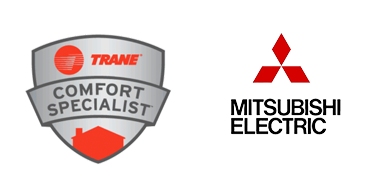What is an Electric Furnace
An electric furnace is an appliance that uses electricity to provide heating. Electric furnaces are the most common type of central heating unit in homes, particularly in climates where winters are harsh and prolonged. The main components of this appliance include a fan, heat exchanger, heating elements that run through the heat exchanger coils, and a control panel.
How Does an Electric Furnace Work?
Electric furnaces consist of a blower that moves air across the heat exchanger coils, then into your home. The heating elements in the heat exchanger generate warmth as electricity passes through them. The fan pushes air past the now warm heat exchanger coils, warming the air even more as it is forced into your home. A thermostat in the electric furnace controls the blower and heating elements to maintain a set temperature between 60 degrees Fahrenheit at night to 75 degrees Fahrenheit during the day.
The Benefits of an Electric Furnace
One of the most significant benefits is the installation process. Most electric furnaces are installed by professional furnace technicians, leaving you to enjoy your fresh, warm air without having to install it yourself or hire someone else to do it for you.
Because heating systems are one of the largest energy users in a home, switching to an electric model can be very beneficial. A new heating system can reduce your energy bill by up to 30%, depending on the cost of electricity in your area, the system you choose, and how well-insulated your home is already.
Warmth Electrical furnaces typically provide heat at around 40 degrees Fahrenheit, keeping you warm even if the outdoor temperature drops below zero.
Heat your whole house electric furnaces can be connected to a central blower and duct system that distributes warmth throughout your home. Some models include an electric-powered auxiliary heating element, such as a baseboard heater, which works in conjunction with the furnace.
Flexible Installation. You can customize the installation of an electric furnace to fit your needs. If you'd like, you can install it yourself or hire someone to do it for you. Because the unit only requires a 240-volt power supply, it takes up less space than other heating systems.
The Installation Process of an Electric Furnace
Safety First. Electric furnaces require a 240-volt power supply to run the blower motor and heat exchanger coils. A licensed electrician is required for installing this appliance. The installation process involves cutting openings through your home's exterior walls and the interior wall so that the ductwork can be installed. It's a good idea to have an electric furnace installed professionally as it requires knowledge of secure electrical wiring.
Essential Extras. Most electric furnaces require a vent to allow the warm air to be distributed through your home. The furnace requires electrical wiring, motorized ductwork, and louvered vents for proper functionality.


